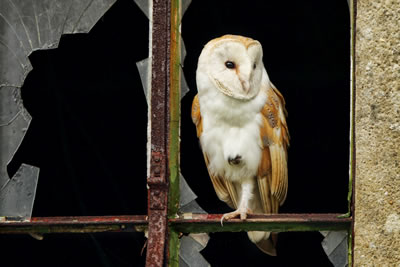Protected Species: UK animals and plants
- Bats
- Dormouse
- Great crested newts
- Badgers
- Birds (including cirl bunting in parts of Devon and Cornwall)
- Reptiles
Protected species survey: the need for early advice
Protected species such as badgers, bats, dormice, great crested newts and reptiles such as slow worms are commonly encountered during projects in the UK - even on small, apparently ordinary urban sites - so obtaining early, expert advice on protected species survey requirements can be vital if delays and unexpected costs are to be avoided later in the project life-cycle.
Planning requirements for a protected species survey
Since protected species and their habitats can be a ‘material consideration’ in planning terms, a survey is likely to be needed if the initial ecological walkover suggests that suitable habitat is present and that protected species are expected to use the site. Local authorities normally expect an appropriate protected species survey to have been undertaken prior to a planning application being submitted. If protected species have been found during such surveys, a developerwould need to show that potential adverse effects on such species have been avoided though good design, unavoidable impacts mitigated or reduced and residual effects compensated for.
European protected species licensing
A number of species - for example bats, great crested newts and dormice - are protected under European law, in addition to being protected species in the UK under the Wildlife and Countryside Act. Any development likely to affect them may need to be undertaken under the protection of a European protected species (EPS) licence. Assuming European protected species surveys have shown that an EPS species is present and would be affected by a development proposal, a licence application would then need to be made to Natural England, who are the licensing authority in England. This can be a lengthy and rather complex process. We provide advice to guide developers during the application process as well as later on during the licence implementation stage.
How we can help you
Sites that require protected species survey work can range in scale from small barn conversions, where bats might be an issue, to much larger developments such as proposed residential, transport, Energy from Waste, quarrying or wind / solar energy schemes, where there might be multiple protected species issues that need to be addressed at the pre-application stage in an Ecological Impact Assessment. Our services comprise baseline protected species survey work using licensed specialists wherever needed, followed by preparation of written reports which can, if required, include detailed mitigation strategies, proposals for monitoring or preparation of a Habitat Management Plan.
We have over 20 years’ experience surveying all the usually encountered protected species UK-wide, such as bats, badgers, great crested newts, dormice, birds (such as barn owl and cirl bunting) and invertebrates. Contact us on 01392 833345 or email info@amecology.co.uk for help and advice on your protected species survey.

